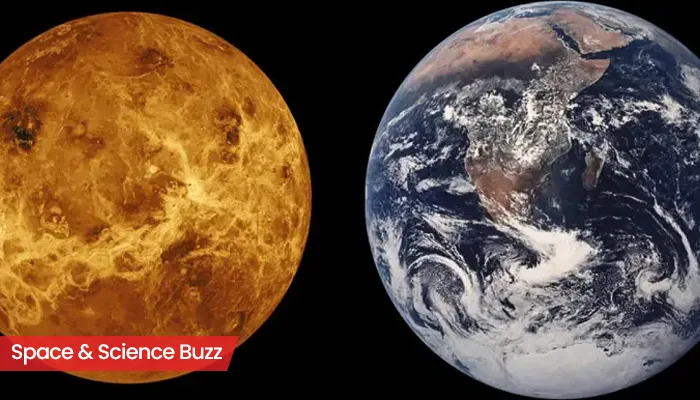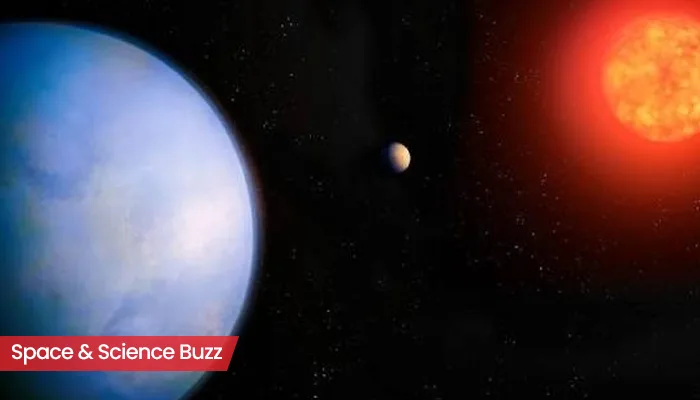Apophis’ 2029 Earth Flyby: A Rare Chance to Study an Asteroid's Potential Impact and Scientific Riches
- Devyani
- 1 year ago
- 4 minutes read

Get ready to experience a sci-fi blockbuster in real life as an asteroid named Apophis is set to pass exceptionally close to Earth in April 2029. However, unlike the big-screen rescues shown in blockbuster movies, this real-life event will present scientists with an excellent and rare opportunity to closely monitor this celestial object, which as of now poses no threat to Earth.
What is Apophis?

(Picture credit: European Space Agency)
Named after the Egyptian god of chaos and formed nearly 4.6 billion years ago, Apophis is a remainder from the early solar system. The decent-sized asteroid which measures approximately 340 metres (1,100 feet) in diameter, has been moulded by the influence of the gravitational forces of large planets like Jupiter. April 13, 2029, which is coincidentally a Friday, will experience the passing of the Apophis within 20,000 miles of Earth. This figure is closer than many geostationary satellites. Although the name of the asteroid and the date it is slated to pass by Earth is very sinister, it doesn’t pose any actual threat to Earth this time. Rather, the phenomena will provide a remarkable celestial display over the Eastern hemisphere skies. The passing asteroid will be visible as a bright, fast-moving star from parts of regions like Europe, Western Asia and Africa.
Understanding Apophis: Potential Impact
The possibility of Apophis impacting Earth and its potential consequences has sparked discussions within the scientific community and public concerns. If Apophis were to collide with Earth on April 2029, then the impact would release energy which is equivalent to more than 1,000 megatons of TNT- analogous to the detonation of numerous nuclear weapons. The devastating consequences of the impact will be alarming, although it won’t be as cataclysmic as the asteroid which led to the extinction of dinosaurs about 66 million years ago. The collision of the asteroid with Earth would result in drastic damages over hundreds of kilometres. Fortunately, according to the current forecast report, such a collision won't happen in 2029.
Scientific Missions Targeting Apophis

OSIRIS-APEX| OSIRIS-REx
The close flyby of Apophis will present scientists with a significant yet rare opportunity to study and collect valuable data for improving our understanding of this celestial object. The refurbished version of NASA’s OSIRIS-REx spacecraft- ORIRIS-APEX mission which brought back samples from asteroid Bennu to Earth- is slated to meet Apophis in June 2029. Over 18 long months, the OSIRIS-APEX will chart the asteroid’s surface and investigate its chemical composition. This approach will provide significant insights into the structure and history of Apophis.

ESA’s Ramses Mission To Apophis
On the other hand, the European Space Agency (ESA) is mounting its Ramses mission, which will surveil the asteroid as it flies by Earth and observe how Apophis is affected by the Earth’s gravity. Ramses is meant to collect data on the influence that close planetary encounters can have on an asteroid’s surface and rotation. This study will provide substantial and valuable knowledge for future planetary defence efforts.
NASA’s Efforts in Asteroid Defence
NASA has been assiduously working on methods and strategies to deflect potential asteroid impacts on Earth. NASA’s Double Asteroid Redirection Test Mission (DART) in September 2022, was a triumphant leap in this direction. The mission successfully demonstrated its ability to alter an asteroid’s trajectory by crashing a spacecraft into it, highlighting a significant step forward in planetary defence. The mission underlined how with expert and advanced technology, humanity can stave off disastrous asteroid impacts.

NEO Surveyor Telescope
In addition to this, NASA is gearing up for the NEO Surveyor telescope which is scheduled for a 2028 launch. The telescope will search near-Earth objects larger than 140 metres (460 feet). The goal of the mission is to identify 90% of near-Earth objects within 30 million miles of Earth. Future projects, including potential collaboration with Jeff Bezos’ Blue Origin, are under examination. This will ensure that our capabilities to detect and deflect perilous asteroids are enhanced.
As the 2029 Apophis asteroid flyby approaches, the scientific community is working diligently and urgently to settle mission plans and obtain funding for research in future. While the thought of our planet Earth colliding with a sizeable asteroid seems alarming, the phenomenon offers a significant opportunity for discovery and growth in our understanding of the cosmos.



.webp)
.WEBP)
.WEBP)
.webp)
.webp)


.webp)
.webp)
.webp)